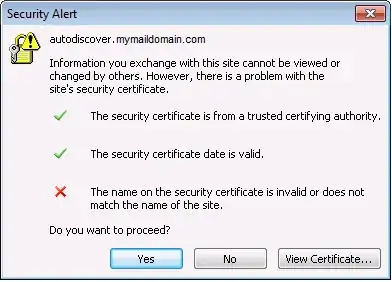Yes it can be done. However its a "configuration change" and you need another approach to "provide the service". That means you couldn´t use the hostnames from the customers, they need to use the hostname from the "master server".
In our company we have multiple different email adresses (every department has a own Domain, itservices.tld, managagementservices.tld, repairman.tld, ...). On all of them we need to have AutoDiscovery configured, however they all point to the same Exchange environment. We have so many domains that the possible alternative names in a certificate wouldn´t fit (+60 Domains) and 1-2 times per year somebody comes in with a new domain which must be added. So the construct is similar like your one.
The solution was to use a small apache server (you can also use your load balancer like we did) listen on any AutoDiscovery..tld host. If a new domain is needed we add it here. The host then performs a http redirect to AutoDiscover.itservices.tld and there an http -> https redirect is happening (do not use https on the apache server, otherwise you might get some other warnings!).
So if a user (blocks@managagementservices.tld) then configure his outlook for the first time, the outlook clients checks the DNS and finds AutoDiscover.managagementservices.tld is then http redirected to AutoDiscover.itservices.tld and this host then finally provide https://AutoDiscover.itservices.tld/Autodiscover/Autodiscover.xml. So the only SSL certificate we need is AutoDiscover.itservices.tld (and as well owa.itservices.tld and oaw.itservices.tld and smtp.itservices.tld).
If a new company would then comes in you need to adjust only the http redirect and you are fine, no need to change the SSL certificate. But as a pitfall the name from the "main" environment will come up / is shown.
Its similar like the Exchange Online (part from office 365) setup. So if you need an example you could peak here I guess.
